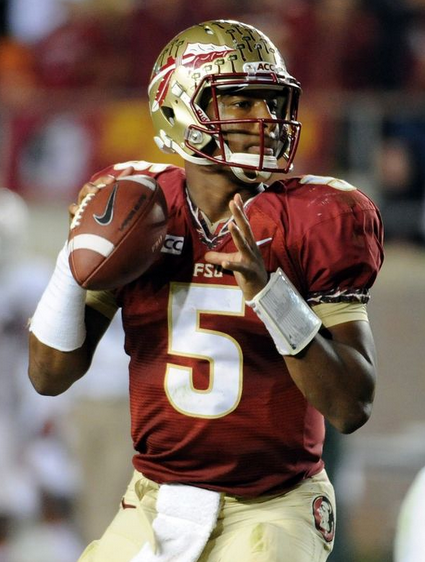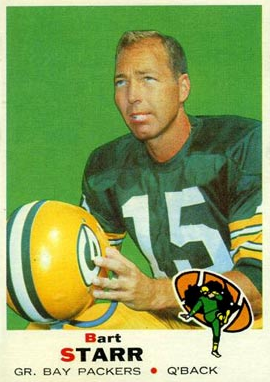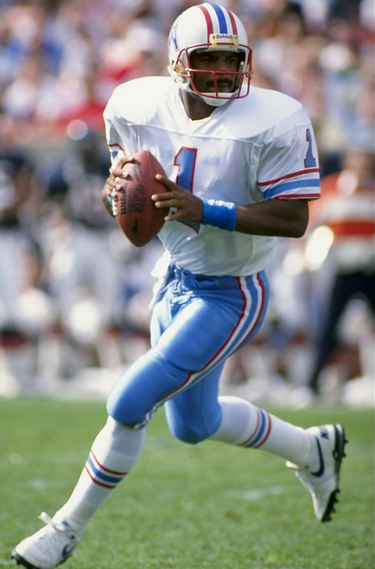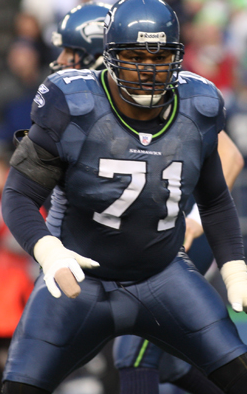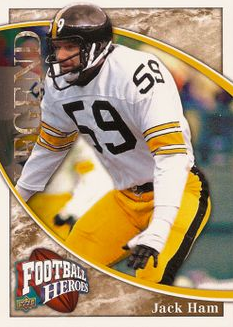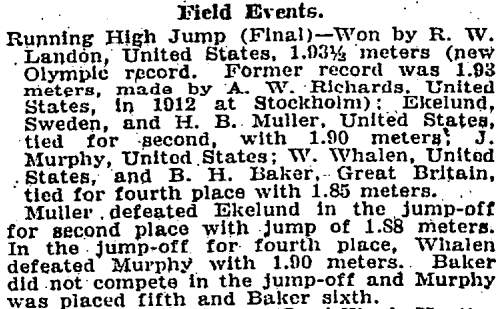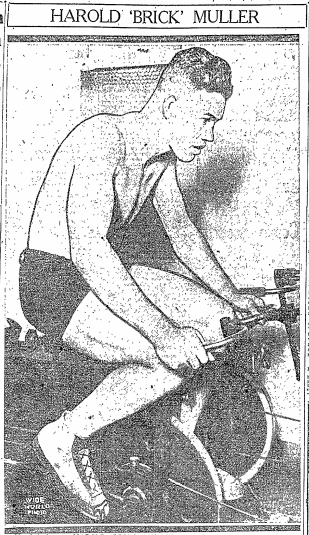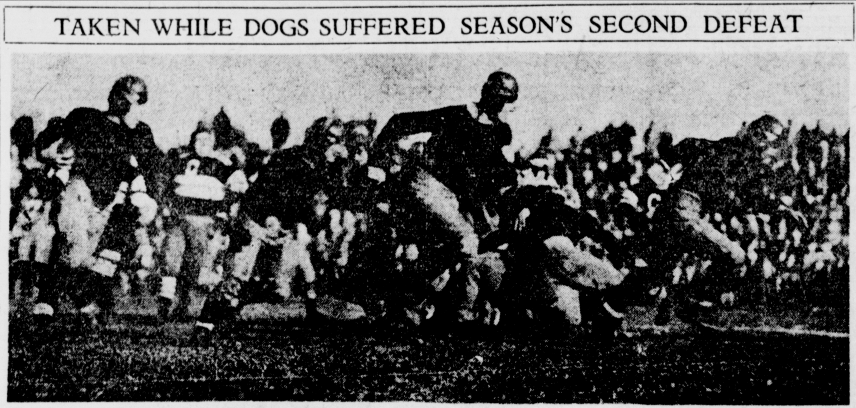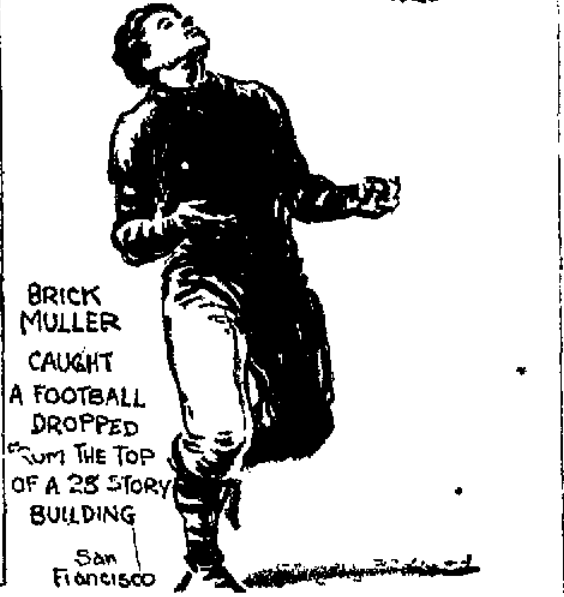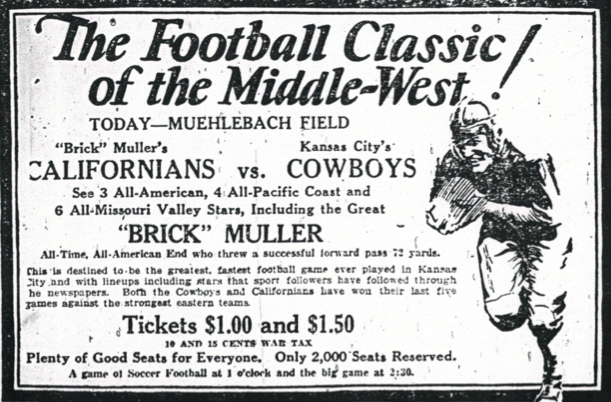The eulogies have poured forth since Frank Gifford died earlier this week at 84. And deservedly so. He was a New York icon, The Giffer was, a football/sportscasting double threat the likes of which has rarely been seen. Still, I’m not sure enough has been made of how good a back Gifford was. His celebrity as a TV personality tends to share the billing with his football exploits — so much so that you’d think he made the Hall of Fame as much for his talking as for his playing.
Let’s see if I can rectify that.
One of the problems for almost any player in Gifford’s era — that is, the NFL’s first 50 years — is that his statistics can seem shrunken. It was just a different time, a different game. The seasons were shorter, the yards were harder to come by (because defense hadn’t been legislated out of existence yet) and the players often went both ways, which kept them from rolling up the ridiculous offensive numbers you see today. All you can do in such a situation is measure a man against his contemporaries . . . and against those, of course, who came before him. By that yardstick, The Giffer was pretty fabulous.
By the way, did you know he holds the record for receiving yards by a running back in an NFL championship game? (Neither did I until I researched this post.) In 1956 he had 131 in the Giants’ 47-7 blowout of the Bears.
FYI: The most receiving yards by a back in the Super Bowl is 101 by the 49ers’ Roger Craig. Heck, a 131-yard receiving day in the NFL title game is unusual enough for a receiver. Since 1970 only a dozen wideouts have reached that total.
That’s the thing about Gifford. He might have played in the era of black-and-white televisions, but he was very much a Back of the Future, one who would have fit in perfectly with the West Coast offense. Indeed, he was as dangerous catching the ball as he was running with it. In his first eight seasons, 1952 to ’59, he racked up 3,347 yards rushing and 3,208 receiving. The NFL had never had a back – of Hall of Fame caliber, at least – who was so perfectly balanced.
That was Gifford’s prime as a running back. (In 1960, you may have heard, he got blindsided by Eagles linebacker Chuck Bednarik and knocked out of the game for more than a year. When he returned, he transitioned to wide receiver — and even went to the Pro Bowl in ’63.) Anyway, at the end of the ’59 season, The Giffer compared quite favorably to pro football’s all-time backs. At that point, only five of them had gained more than 5,000 yards from scrimmage in their NFL careers. As the following chart shows, Frank ranked second on the list, behind only Joe Perry:
MOST YARDS FROM SCRIMMAGE BY A RB (THROUGH 1959)
[table width=500px]
Years,Player\, Team,Rushing,Receiving,YFS,TD
1950-59,Joe Perry*\, 49ers,7\,151,1\,271,8\,422,56
1952-59,Frank Gifford\, Giants,3\,347,3\,208,6\,555,51
1952-59,Hugh McElhenny\, 49ers,3\,941,2\,552,6\,493,49
1952-59,Ollie Matson\, Cards/Rams,4\,194,2\,280,6\,474,46
1944-51,Steve Van Buren\, Eagles,5\,860, 523,6\,383,72
[/table]
*Also gained 1,570 yards in the rival All-America Conference in 1948 and ’49, which would bring his total to 9,992.
That’s right. At that stage, Gifford had a slight edge over McElhenny and Matson in terms of production (touchdowns included). And Hugh and Ollie came into the league the same year Frank did, so they’re all on equal footing. (Quite a year for running backs, that ’52 draft.)
Problem was, there was no such thing as “yards from scrimmage” in 1959. The NFL didn’t keep track of them yet. To the league’s statisticians, rushing yards were all that mattered. So some of Gifford’s Total Value was probably lost on the fans. (The fans outside of New York, I mean.)
Consider: Through ’59, only six NFL backs had had a 500/500 season – 500 yards rushing, 500 receiving. Gifford was the only one who did it more than once. In fact, he did it three times.
500 YARDS RUSHING AND 500 RECEIVING BY A RB (THROUGH 1959)
[table width=350px]
Year Running back\, Team,Rush,Rec
1943 Harry Clark\, Bears,556,535
1949 Gene Roberts\, Giants,634,711
1954 Ollie Matson\, Cardinals,506,611
1956 Frank Gifford\, Giants,819,603
1957 Frank Gifford\, Giants,528,588
1958 Tom Tracy\, Steelers,714,535
1958 Lenny Moore\, Colts,598,938
1959 Frank Gifford\, Giants,540,768
[/table]
That last figure — 768 — is also worth discussing. After all, 768 yards in a 12-game season is the equivalent of 1,012 in 16 games. Just three running backs, let’s not forget, have had a 1,000-yard receiving season — Craig (1,016) and the Chargers’ Lionel James (1,027) in 1985 and the Rams’ Marshall Faulk (1,048) in ’99. So, again, at his best, Gifford did things modern backs have rarely done, even with all the rule changes favoring offense.
Before becoming the Giants’ starting left halfback, The Giffer made the Pro Bowl as a defensive back — while also getting playing time on offense. After a 14-10 loss to the Steelers in 1953, The New York Times said he “played a whale of a game” and logged “some 50 minutes of two-way action.” (The Brooklyn Eagle seconded the motion, calling it “a brilliant performance as an iron man on offense and defense.”) He scored the Giants’ only touchdown that day on a 6-yard reception and, for good measure, booted the extra point. (Yeah, he could kick a little, too.)
Earlier that season, the Eagle summed up his efforts against the Redskins this way:
[One of] the only bright spots in the New York picture yesterday [was] Frank Gifford, crack defensive back. Gifford almost single-handed[ly] averted a shutout. He leaped high to intercept a [Jack] Scarbath flip to prevent a touchdown, and his runback to midfield paved the way for the Giants’ first score — a safety — after the ’Skins had taken a 10-0 lead.
Then, in the second period, the former Southern California ace took a lateral from Tom Landry [on an interception return] and sped down the sideline for the lone New York touchdown. Tom had snared a heave by Eddie LeBaron.
Gifford, who had been used exclusively on defense, was tossed into the game to pass in the closing moments as a last-minute desperation measure by coach Steve Owen.
That brings us to the Last But Not Least part of this post: Gifford’s arm. He threw the ball about as well as any running back in the modern era — as his 14 touchdown passes, a record for his position, attest. On five occasions he staked the Giants to a 7-0 lead with a TD toss, and in another game he threw for two scores. (What were the Chicago Cardinals thinking?) Here’s a great factoid: The last touchdown of Owen’s Hall of Fame coaching career came on a 10-yard flip from Gifford to Ray Pelfrey.
And here’s another: Frank threw as many TD passes in 63 attempts as Ryan Leaf did in 655 – and one less than Matt Leinart did in 641.
About all that’s missing from Gifford’s resumé is some kick-return heroics. But there’s a reason for that: The Giants had Hall of Famer Em Tunnell to run back punts (though Frank did average 25.8 yards on 23 kickoff returns). Besides, no sense in spreading the guy too thin, right? He was already doing everything but sweeping out the stadium.
Running back, receiver, defensive back, passer, kicker — there haven’t been many modern players as multitalented as Frank Gifford. Just wanted to drive home that point a bit more forcefully as we look back on his career and pay our final respects.
Source: pro-football-reference.com
Related content:
Chuck Bednarik’s famed hit on Gifford in 1960.
Gifford’s appearance on the What’s My Line? game show during his 1956 MVP season.

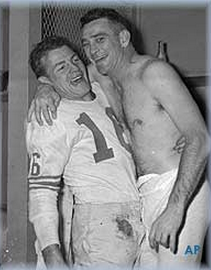
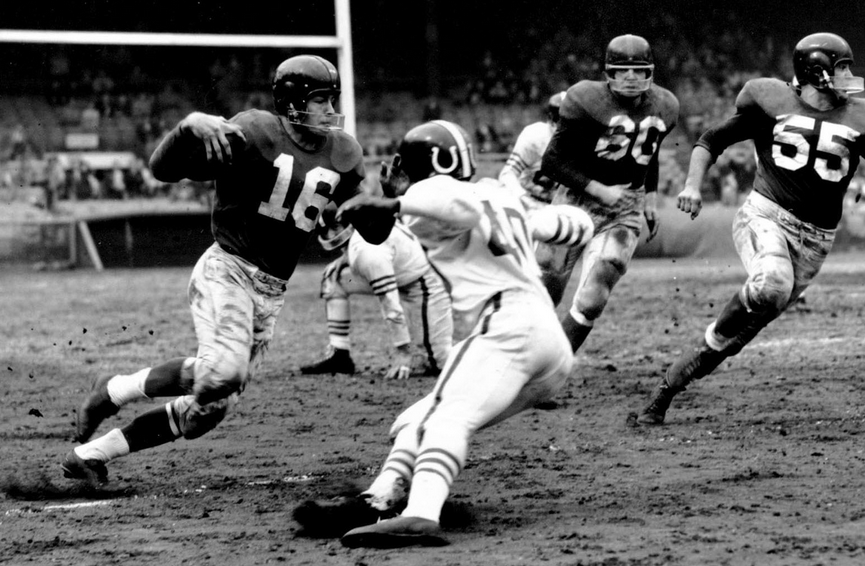
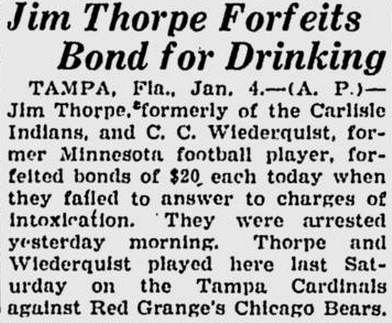
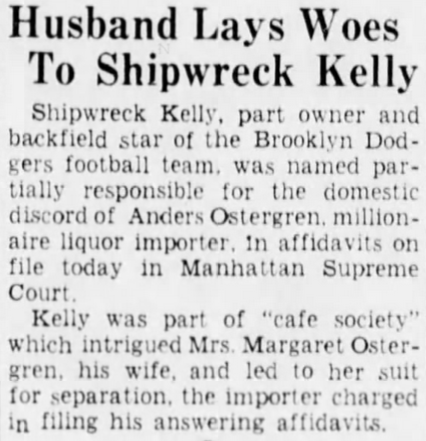
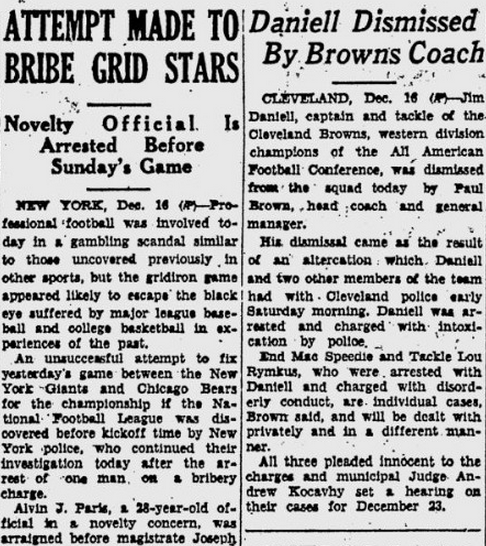
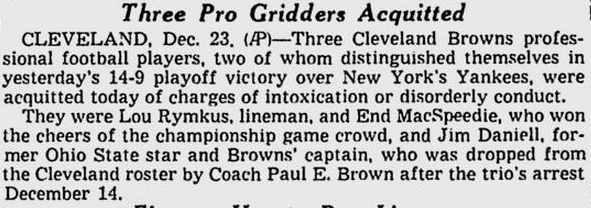
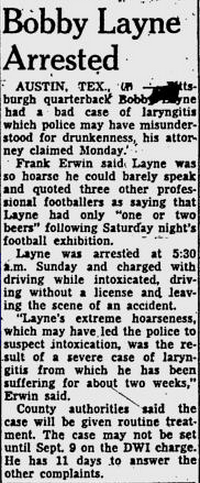

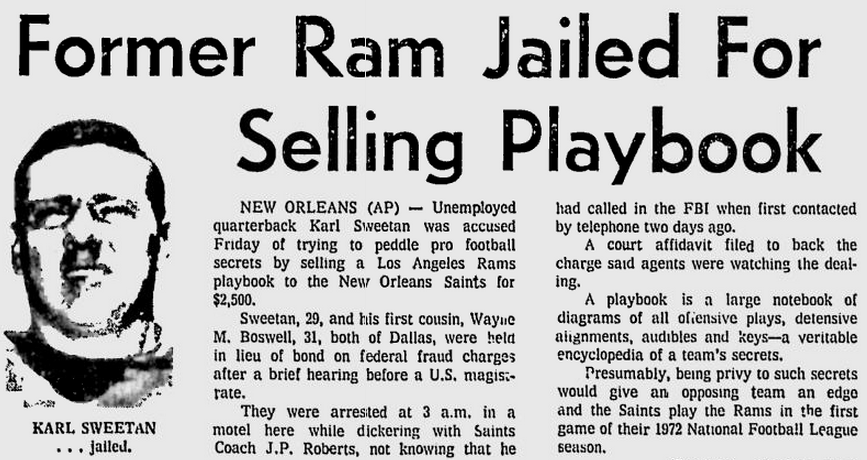
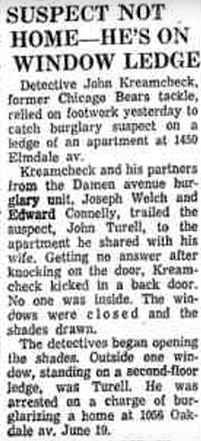

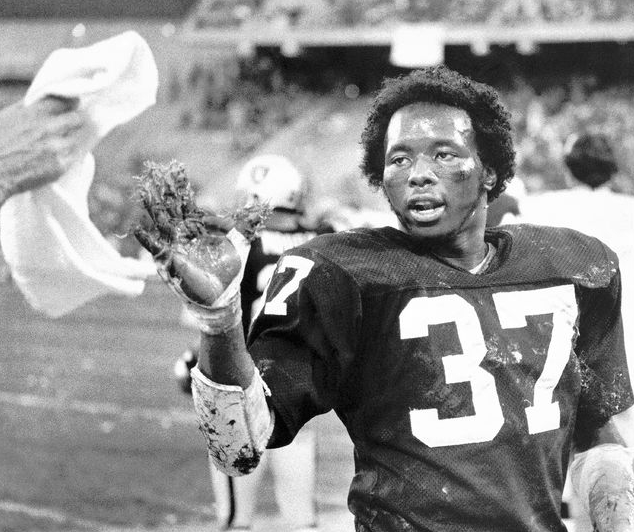

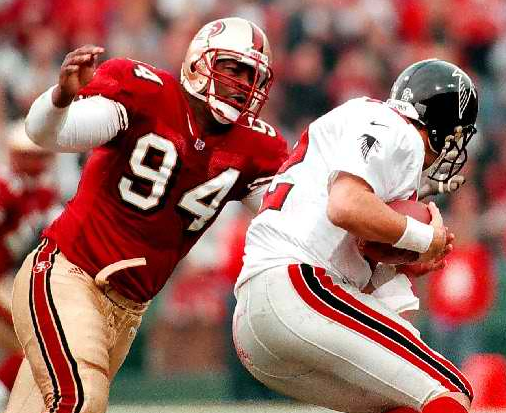
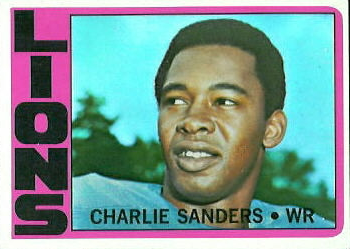
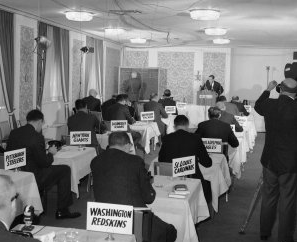
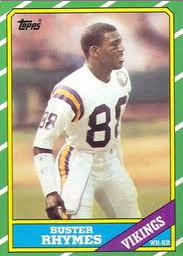

![Terry Baker: a better arm “for carrying around a trophy [than] throwing a football."](https://profootballdaly.com/wp-content/uploads/2015/04/Terry-Baker-with-Heisman.png)
